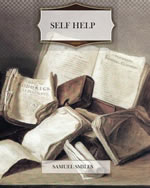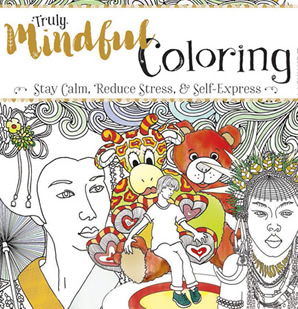Embodied Being
Embodied Being is an interweave of contemplation, Zen practice, and philosophy to inform the art of manual therapy (Rolfing in particular), with each thread representing a solid thread of Jeffrey Maitland’s internalized fabric.
Boundary Boss: The Essential Guide to Talk True, Be Seen, and (Finally) Live Free
By Nancy Eichhorn, Ph.D.
My inner editor smiles (envision a Cheshire Cat grin) when reviewing a new book and its layout includes all the necessary...
Same Time Next Week: True Stories of Working Through Mental Illness
With increased efforts to reduce stigma and approach mental health care from a more personalized perspective, Same Time Next Week comes at a critical moment in the transformation of psychotherapeutic practices from the clinical to a more humanized model. Offering an intimate look into a world that, until recently, has remained largely hidden behind closed doors and hushed tones, the eighteen stories comprising this anthology are deeply personal, rich and thorough in their narrative structures without the sterile feel of the traditional case study. In their exploration of a wide variety of mental illnesses including (but not limited to) depression, bipolar disorder, OCD, schizophrenia, and eating disorders, these stories are distinct in that many are written by mental health professionals who have, themselves, experienced mental illness and therefore have first-hand knowledge of the trials and tribulations of recovery.
Want: A Novel
In Want, Lynn Steger Strong writes for the times we’re living in. Saddled with plenty of responsibilities, and jobs that simply don’t pay enough, Elizabeth is very much a 21st century woman. Her dissatisfaction with her life, and her desire for everything she does not have is what feeds the novel's core conflicts. Steger Strong asks us: Why must a woman with so much still want more?
Worried? Science investigates some of life’s common concerns
Worried? seeks to relieve some of our anxiety by teaching us to take control of the situations that cause us to worry. The authors claim that taking control involves “critically evaluating potential threats, determining what poses the greatest danger, and prioritizing your actions to minimize adverse outcomes” (pg. 2) and this is exactly what they achieve in their book.
Verbal and Non Verbal Communication in Psychotherapy
Gill Westland’s 2015 release entitled, Verbal and Non-Verbal Communication in Psychotherapy, merits mention. Her voice felt personable, reachable, while professional, informative. There’s something for anyone involved in mental health care as Gill draws on current findings from: infant development studies; neuroscience; various schools and approaches; and mindfulness/Buddhist practices.
Show Me All Your Scars
Lee Gutkind brought together twenty authors to let their voices be heard. These authors wrote about their experiences with mental illness (whether they themselves suffer or a family member), creating an intense, emotional and gripping inner look at mental illness. Just like mental disorders themselves, the stories are diverse in nature. The first entry, Take Care by Ella Wilson, immediately brings the reader into her mind mid-manic episode. Filled with heartbreaking and heavy prose and metaphor, Wilson’s place as the opening story sets the tone for the rest of the book: it’s going to be challenging, confusing, and personal.
Mindfulness
Mindfulness is trending. It’s been on the forefront of conversations in terms of Western therapeutic methodologies since Jon Kabat Zinn integrated it into his Mindfulness-Based Stress Reduction program (MBSR) in the early 1980s. Today, mindfulness practices are at the heart of many psychotherapeutic approaches such as: mindfulness-based cognitive therapy (MBCT); acceptance and commitment therapy (ACT); dialectical behavior therapy (DBT); mindfulness-based relapse prevention (MBRP); mindfulness-based trauma therapy (MBTT); and mindfulness-based eating awareness training (MB-EAT). The word itself, however, is often confused. Its meaning subjectively associated with who or what entity is promoting its use. There’s clearly a difference between Eastern approaches to meditation and mindfulness and the current Western emphasis. With the proliferation of modalities integrating components of meditation and mindfulness practice, this book is a welcome addition to Hogrefe’s Advances in Psychotherapy: Evidence Based Practice Series—noted as Volume 37.
The Science of Addiction: From Neurobiology to Treatment, 2nd Edition
The Science of Addiction provides up-to-date research to explain causes of and treatment options for addiction. In so doing, author Carlton Erickson informs readers of the many facets of addiction, i.e., neurobiology, genetics, brain disease, and offers a detailed look at its manifestations.
Thirteen distinct chapters help readers understand addiction. Chapters 1-3 focus on the terminology of addiction and why it confuses both professionals and the general public. A detailed look at what addiction is and what it is not is rooted in words. The author suggests that words like ‘addiction’ and ‘alcoholism’, as used in every day conversations, are “colloquial, unscientific, stigmatizing, and just plain wrong” (pg. 3). “Words matter!” he writes. “Precise language reduces misunderstanding, stigma and false impressions” (pg. 4).
Unshame: Healing Trauma-based Shame through Psychotherapy
I follow Carolyn’s blog because her writing fascinates me. She helps people (mainly in the UK) recover from trauma, abuse, and dissociative disorders, heavy stuff. Yet, she writes with a light hand—her use of figurative language, strong nouns and verbs, pacing, structure, and characterization create stories that share the confusion, the pain, the doubt, the suffering, and the dread that come with trauma as well as the desire to surmount it all and be healthy without miring the reader in an abyss of drop-dead emotions.
When I learned about her new book, Unshame: Healing Trauma-based Shame through Psychotherapy, I requested a reviewer’s copy.














